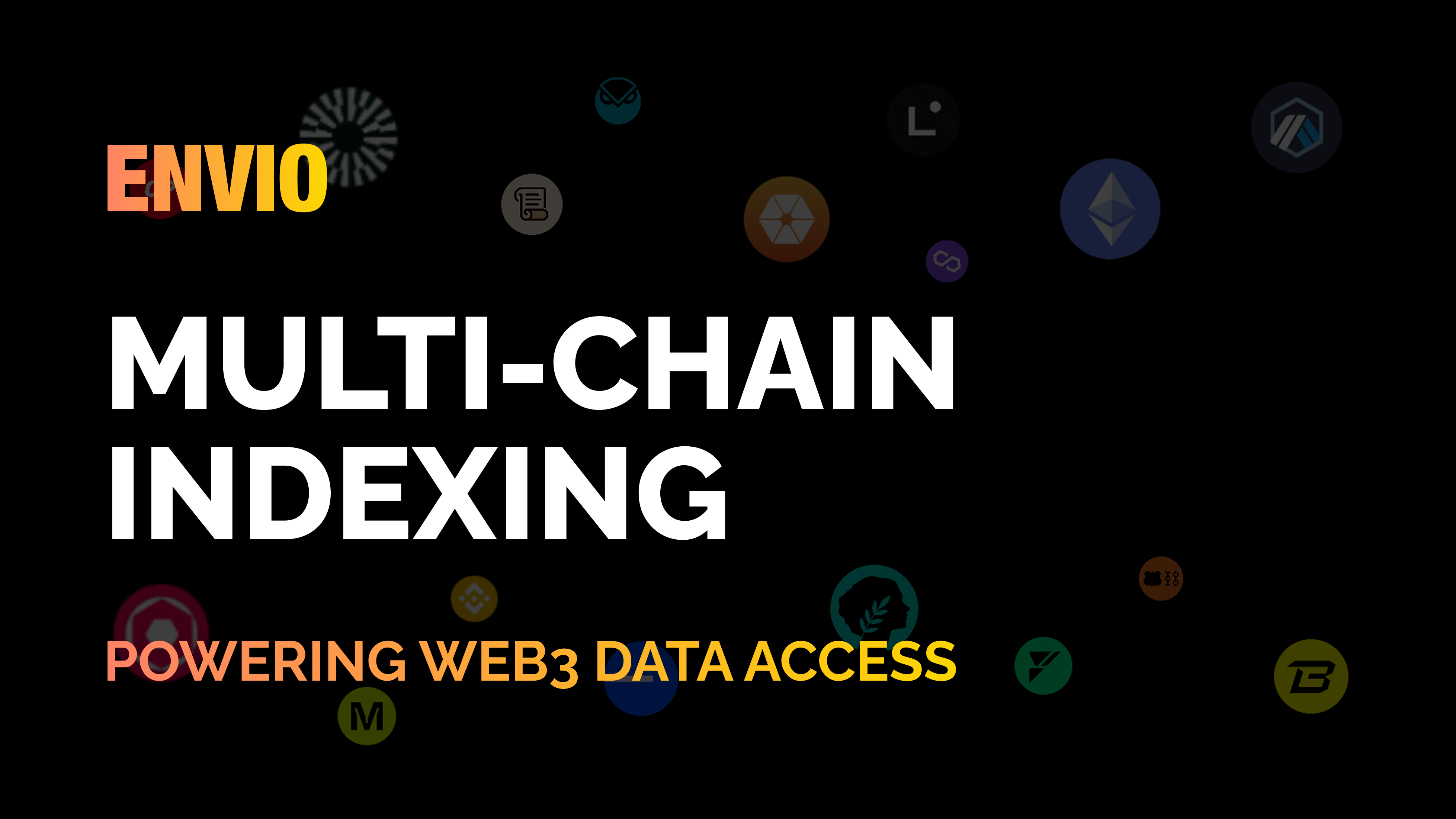What is Multichain Indexing?

Web3 is inherently multichain. Apps no longer operate in isolation—whether it's DeFi protocols aggregating liquidity across multiple networks, NFT marketplaces spanning multiple ecosystems, or analytics platforms tracking cross-chain activity, seamless access to reliable data is critical.
Yet, querying multiple chains efficiently remains a challenge. Each network has its own architecture, RPC limitations, and data structures, making direct integration complex and resource-intensive. Multichain indexing solves this by providing a unified way to structure, query, and analyze blockchain data across chains—without the overhead of managing individual indexing solutions.
What Is Multichain Indexing?
Multichain indexing is the process of ingesting, organizing, and providing blockchain data across multiple networks in a unified way. It simplifies the complexity of querying different blockchain infrastructures, allowing you to access structured data from various chains through a single interface.
This means:
- You don’t need to manage separate data pipelines for each chain.
- Access to faster, more efficient queries across multiple networks.
- Reduced dependency on rate-limited RPC endpoints.
Instead of treating each network as an isolated system, multichain indexing organizes the data, ensuring apps can query assets, transactions, and smart contract events in a consistent format, regardless of the underlying chain.
Why Multichain Indexing Is Essential for Web3
1. Interoperability Without Complexity
Cross-chain apps rely on real-time, consistent access to data from different chains. A prediction market built on one chain might reference pricing data from another. A DeFi aggregator might route transactions across multiple liquidity pools. Multichain indexing bridges these gaps by allowing apps to operate across chains seamlessly.
2. Scalability and Performance
Querying raw data directly from RPC nodes is inefficient—especially at scale. Rate limits, latency, and inconsistent indexing methods across chains create bottlenecks. Multichain indexing pre-processes and structures the data, enabling high-speed queries and scalable access without overloading RPC endpoints.
3. Consistent Data Models Across Chains
Each chain has its own way of storing and exposing data. Ethereum-based networks use events, whereas others such as Fuel rely entirely on logs and receipts. Instead of forcing you to build custom adapters for each chain, multichain indexing harmonizes data models, ensuring apps can interact with all the data in a standardized format.
4. Reduces Developer Overhead
Maintaining separate data pipelines for different chains is costly and time-consuming. With multichain indexing, you can focus on building application logic instead of dealing with raw chain infrastructure. A single, unified query layer removes the need for writing custom indexers per chain, reducing both complexity and maintenance effort.
How Envio Powers Multichain Indexing
Envio's HyperIndex is designed for performance, flexibility, and scalability, enabling real-time multichain indexing with a modular architecture that is fully customizable and adaptable to different chain environments.
Key Features of Envio's HyperIndex for Multichain Indexing
✅ Unified Query Layer – Query indexed data across multiple chains with a single GraphQL API, providing a simple and unified data access point.
✅ Event-Driven Indexing – Indexes smart contract events across multiple chains, ensuring efficient and reliable access to real-time data.
✅ Multichain Support – Seamlessly handles data from various chains, enabling easy integration across different networks.
✅ Optimized for Performance – Processes and retrieves on-chain data with low latency, keeping your apps fast and responsive.
HyperIndex simplifies working with data across different chains, allowing you to access and query data without the complexity of managing multiple infrastructures.
Real-World Examples: Apps That Utilize Multichain Indexing
DeFi Protocols (e.g., Uniswap)
- Aggregating liquidity across multiple chains.
- Tracking user transactions and positions across ecosystems.
- Calculating cross-chain lending and borrowing rates in real-time.
NFT Marketplaces (e.g., OpenSea)
- Fetching metadata, ownership records, and sale history across chains.
- Providing a unified search experience for cross-chain NFT collections.
Cross-Chain Analytics & Dashboards (e.g., ChainDensity)
- Monitoring activity and transaction flow across multiple blockchains.
- Standardizing data for visualization and reporting.
Multichain indexing removes friction for these apps, ensuring data is accessible, structured, and reliable across blockchain networks.
Best Examples of Multichain Indexers
Uniswap V4
This Uniswap V4 indexer demonstrates a TypeScript-based, multichain indexer for Uniswap V4 across 10 different networks. It powers the v4.xyz website, providing seamless data access.
Sablier
This Sablier indexer utilizes Envio HyperIndex, a TypeScript-based, multichain indexer, indexing data across 18 EVM chains. Data is accessible through a unified GraphQL API.
Aerodrome
This Aerodrome indexer, powered by Envio HyperIndex, supports the Aerodrome and Velodrome DEXs, indexing data across multiple chains like Base, Optimism, Mode, and Lisk. Data is served through a unified GraphQL API.
Conclusion
Multichain indexing is no longer just a convenience, it’s a core infrastructure layer for Web3 apps. Solutions like HyperIndex empower developers to achieve scalable, real-time data access across chains, enabling the next generation of multichain apps.
Web3 is inherently multichain, and applications need data infrastructure that reflects this reality. Whether building DeFi platforms, NFT marketplaces, or analytics tools, multichain indexing is now a cornerstone of scalable, efficient Web3 development.
About Envio
Envio is a multichain, dev-friendly, speed-optimized blockchain indexing solution that addresses the limitations of traditional blockchain indexing approaches and gives developers peace of mind. Blockchain developers and data analysts can harness the power of Envio to overcome the challenges posed by latency, reliability, infrastructure management, and costs across various sources.
If you're a blockchain developer looking to enhance your development process and unlock the true potential of Web3 infrastructure, look no further.
Join our growing community of Web3 developers, check out our docs, and let's work together to revolutionize the blockchain world and propel your project to the next level.
Website | X | Discord | Farcaster | GitHub | Medium | YouTube | Reddit